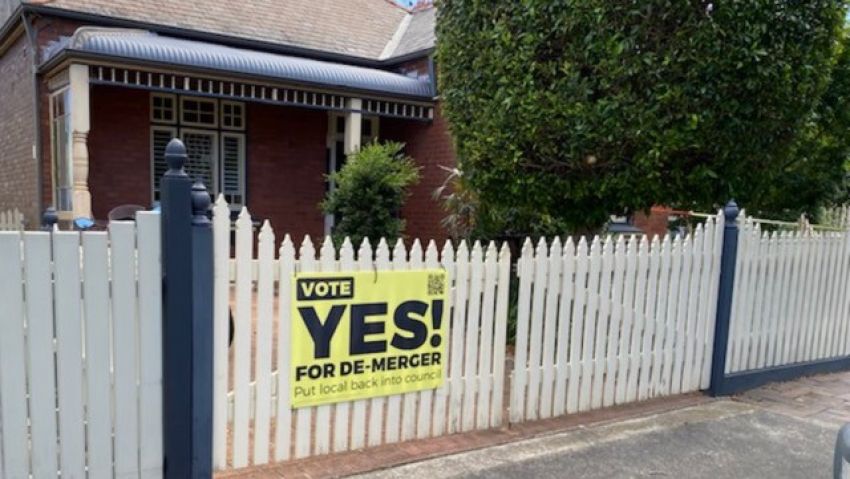
The Inner West Council faces growing threats to its public recreation assets, particularly since the 2016 forced merger of Ashfield, Leichardt and Marrickville Councils into a single local government area (LGA).
In addition to the potential alienation of dwindling public land, the amalgamation risks further outsourcing of public recreational facilities and community spaces management, despite the Inner West already having one of the lowest ratios of public green space per resident in Sydney, with 789 residents for every hectare of public space.
Yet the creeping privatisation of our public spaces has only escalated since amalgamation and includes proposed state government legislation to remove protections of historic buildings in Callan Park, a publicly-owned 61-hectare estate nestled on the shores of Iron Cove in Lilyfield.
Proposed amendments to the Callan Park (Special Provisions) Act 2002 would permit 50 year commercial leases in heritage buildings, such as the 19th century Kirkbride former mental health asylum sandstone complex, which had been used sympathetically as an art school by Sydney College of the Arts from 1996 until 2019.
When the University of Sydney administration tried to close the art school in 2016, students fought to save their heritage campus with a student occupation lasting 65 days, one of the longest in Australia’s history.
The occupation was supported by Friends of Callan Park, Unions NSW and labour movement luminaries such as Jack Mundey, whose Green Bans saved Sydney’s historic Rocks area from overdevelopment.
Only after police forcibly removed students did the occupation finally end, with university executives relenting on their decision to close the art school. Administrators allowed the campus to continue until late 2019, before relocating the facilities to main campus. Since then, the Callan Park complex has been increasingly at risk of plunder by developers and the state government.
The Inner West may be the epicenter of land use privatisation, but all urban commons across Australia are facing threats by a form of monetisation at local government level.
This involves council transfers to private corporations, not necessarily of ownership, but the authority to manage public spaces for profit.
Across Australia, outsourcing the management of council-owned pools and recreation facilities has been happening largely without public debate. Progressive councillors, who might otherwise provide critical oversight, can often be seduced by the corporate sustainability hype that emphasises how contractors are recycling water, or using solar power.
While distracted by such greenwashing, councillors can overlook other potential repercussions such as deleterious impacts on public access, operational safety and client privacy.
There are also hidden dangers and potential conflicts of interest in outsourcing the management of council pools and fitness centres. These include financial incentives for contractors to cut corners on safety to maximise shareholder profits.
The fitness industry is already not well regulated, which means increasing commercial control of our community recreation assets presents real risks to residents and consumers.
Overcrowding, cutting services and reduced opening hours of public facilities are just some of the impacts experienced in the Inner West LGA since amalgamation.
Outsourcing the management of council facilities also had an impact on the casual workforce who were stood down from their jobs during the pandemic lockdowns.
With privatised monopolies, or duopolies, comes not just wealth for the few, but power to control over who will be allowed in. This may mean exclusion of people with temporary or permanent disabilities, or even those who simply complain about overcrowding.
The Australian Human Rights Commission estimates 40% of people aged 18 years and over report having a disability or long-term health condition. Yet, there is no legal requirement for contractors managing council recreation facilities to understand their legal human rights responsibilities.
Further, once council facilities become managed by private companies, client privacy and personal information are no longer protected and can be misused or passed on to third parties in unhelpful ways with impunity.
This is because contracts between council and private corporations to manage recreation facilities can specify that private contractors are “not Council’s agent” and are “contracted to act independently of Council” which, in NSW for example, exempts privacy breaches from being investigated by the Internal Ombudsman or the Information and Privacy Commission.
Meanwhile, the federal Office of the Australian Information Commissioner has determined that it is unable to investigate breaches of privacy if an “organisation is a contracted service provider for a State contract” (such as the management of a council pool or facility). This catch 22 creates a jurisdictional grey area when it comes to protecting clients from misuse of their personal information by contractors in mixed public/private facilities.
It shows the opacity and confusing grey areas of responsibility that can be used to circumvent public scrutiny. These facilities are still paid for by local ratepayers, but the managers escape accountability.
A disturbing indication of the lack of viability of urban commons under corporate control is the number of consumer complaints to the Australian Competition and Consumer Commission watchdog almost doubled between 2008 and 2016.
The upcoming elections in the Inner West LGA are critical in ensuring the protection of council recreational facilities and public spaces from further privatisation and outsourcing.
Now, more than ever, we need to elect councillors who will unequivocally support community access to our urban commons and reverse the amalgamation.